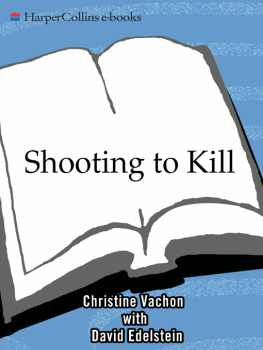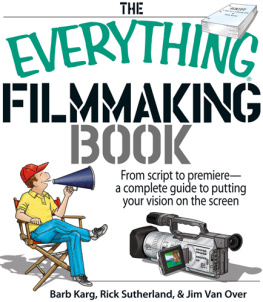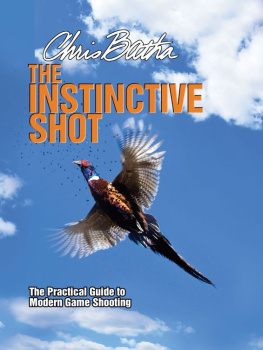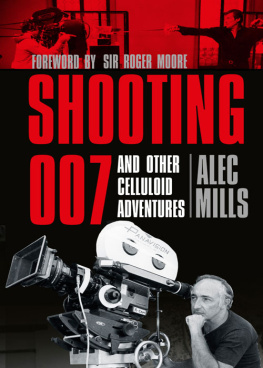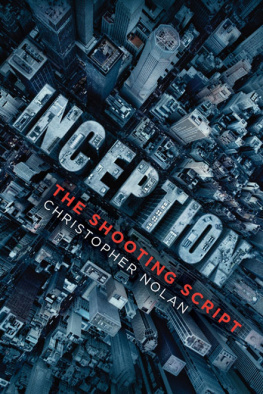O n the way to my office in Manhattan today, I passed a movie shoot on the street, and was hailed by the second assistant director, a hearty girl from the Bronx I used to work with. Its this nightmare low-budget movie, she explained, and then started the litany: I mean, its eight oclock, and crew calls in twenty minutes, and there isnt any coffee, and everyone is late, and the grip truck went to the wrong location and the APOC just quit, the sides arent here, and the D.P. wants a light we didnt order
STOP! I said. I cant hear this! Low-budget filmmaking is like childbirth. You have to repress the horror or youll never do it again. I bid her good-bye and continued on my way, past the $800,000 dollar movie set where the crew looked like a bunch of thirteen-year-olds with tool belts and baseball caps. A lone production assistant desperately tried to keep an eye on two open vehicles while homeless people milled around, attentive. The craft service tablethe mandated food and drink stationwas especially grim: a jar of iced tea mix, a black banana, a handful of broken chips, some used paper cups. That sums it up, I thought: a pathetic table in the middle of nowhere with nothing on it youd eat in a million years.
This is the romantic world of low-budget filmmaking. Its the world in which Ive toiled for fifteen wearisome, exhilarating years, working for little money on the kinds of movies that seldom end up at the local multiplex. And unless someone gives me forty million dollars to make a picture about bisexual rockers, or a sympathetic pedophile, or a woman who wakes up one day and realizes that modern society is slowly poisoning her to death, its the world in which Ill stay. That Im forever independent makes me a little saduntil I arrive at my office and see the posters for the films Ive produced, provacative and risky films, on which Ive felt like an intimate collaborator: Poison, Swoon, Kids, Safe, I Shot Andy Warhol, Go Fish, Velvet Goldmine . Hollywood producers often have to eat worse than black bananas.
The office of my company, Killer Films, is packed with assistants and interns and is woefully short on working air conditioners. My desk is a mess, strewn with papers relating to ten or more projects, some in development, some in pre and postproduction, and some on the verge of release. All they have in common is my name as a producer.
The job of producer is one of the great mysteries of the moviemaking process. When Im asked what producers do, I say, What dont they do? I develop scripts; I raise money; I put together budgets; I negotiate with stars willing to work for said (generally meager) budgets; I match directors with cinematographers, cinematographers with production designers, production designers with location managers; I make sure that a shoot is on schedule, on budget, on track; I hold hands; I stroke egos. I once had to bail an actor out of jail (for gay-bashing, no less). I give interviews explaining what producers do, especially producers of independent, low-budget movies by directors who struggle to put their singular visions on the screen, however much of a challenge those visions might pose for the so-called mass audience. I sit here at my desk with the phone ringing, the fax machine clicking, the assistants and interns running in and out, getting a buzz from the power.
And sometimes I sit here stunned at my powerlessness. Basically, a low-budget movie is a crisis waiting to happen. You stretch every one of your resources to its limit, and then you constantly push that limit. You have to be creative on your feet, because if something goes wrong (and something always goes wrong), you cant just throw money at it. You have to take scary leaps off high buildings, knowing that the landing might be hard.
Im fortunate to have had a miraculously easy landing with the first feature I produced, a movie written and directed by Todd Haynes called Poison . The theme was transgression, and the approach was the opposite of straight. The film consisted of three different stories woven together, each shot in a different style: a black and white horror film, a mock-documentary, and a lush, homosexual prison romance. In script form, it was just tough to read. Half its funding came from Todds extended family and their Los Angeles friends (among them, amazingly enough, Sherwood Schwartz, the creator of Gilligans Island and The Brady Bunch ), the other half from foundations and arts agencies, including (and most notoriously) the National Endowment for the Arts. What nearly brought the endowment down would help us make our names.
The movie had won a prize at the 1991 U.S. (Sundance) Film Festival in Park City, Utah, and had been picked up by a small distributor, Zeitgeist. We were anticipating a tiny art house release. Then, an amazing thing happened: Two weeks before the scheduled release, the Reverend Donald Wildmon, an antipornography activist and the head of the American Family Association, saw a favorable review in Variety that mentioned the films homoeroticism and also cited its partial NEA funding. So he sent letters to every member of the Senate and the House, saying, in effect, Are you aware that this film, which was made with your tax dollars, is filthy, pornographic, and homosexual?
The upshot was chaos. Our phones literally did not stop ringing. We made all the papers. We made Entertainment Tonight . Previously, performance artists like Karen Finley had come under fire for using taxpayers money to do naughty things with yams and chocolate syrup, but movies capture the public and medias interest in a way that minority arts dont. This was the first time the wrath of the Religious Right was being directed at something that more than a handful of people at a time could actually seesomething that could actually show up in your hometown . The head of the NEA, John Frohnmeyerthat poor fellow, banished shortly thereaftercame out in support of Poison . He organized a screening in Washington, D.C., after which a member of the Far Right was quoted in the Washington Post as saying that the movie was so filthy she wanted to take a bath in Clorox.
The bottom line was a fifty-thousand-dollar opening weekend at the Angelika Film Center in New York Citya record that wasnt broken for years.
Poison is a good example of how its easiest to make a movie when you dont know what youre doing. Ignorance makes you fearless. I didnt know how risky limited partnerships were. I didnt know that we shouldnt have gone into production without all the money in hand that we needed to finish the film. I didnt know that a thousand dollars for production design was a bad joke, and that the costume designer would be spending nights in my apartment sewing prison uniforms. If I knew then what I know now, I never would have made the movie. Thats the paradox of low-low-budget filmmaking. You have to expect the worst, plan for the worst, and repress all thoughts about the worst.
All first independent features are done with sleight of hand. Theyre built on contradictions, and their driving force has to be passion for the project. Thats the exhortation under every how-to in this book.
Ive been passionate about movies all my life. My parents took me to Patton when I was seven years old: They liked it, they thought I ought to see it. In Manhattan, where I grew up, there were theaters nearbythe Thalia and the Metrothat showed movies in repertory such as Rules of the Game and The 400 Blows . The mid-seventies was the tail of the last great era in American filmmaking, the time of The Conversation, Mean Streets , and Nashville , when mainstream directors and writers could still wrestle with difficult truths, and pose questions for which they had no easy answers. Video hadnt arrived yet: If you loved a movie and wanted to watch a scene again, you had to go back and sit through the whole thing. I sat through The Poseidon Adventure five times.

